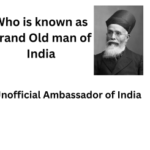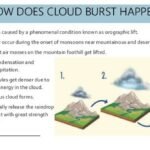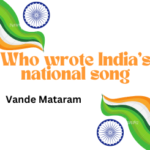Divyangta Khel Kendras: Disability Act and Basics Explained

Union minister for Social Justice and Empowerment Shri Thaawarchand Gehlot has said that looking at the interest towards the sports among the Divyangjan of the country and their good performance in Paralympics, the ministry has decided to establish five ’Divyangta Khel Kendra’ in different parts of country.
Persons With Disability And India
In India persons with disabilities, as per Census 2011 are 2.68 crore and are 2.21 percent of the total population of the Country. These include persons with Visual, Hearing, Speech & Locomotive disability, Mental Retardation, Mental Illness, Multiple Disability and any other disabilities.
UNITED NATIONS CONVENTION ON THE RIGHTS OF PERSONS WITH DISABILITIES (UNCRPD), 2006
India is one of the few first countries which ratified the Convention. Consequent upon signing the Convention on March 30, 2007, India ratified the Convention on 01.10.2007
“Accessible India Campaign” or “Sugamya Bharat Abhiyan” is a bid by the government to make India more friendly towards the differently abled. The campaign has been launched with the sole objective to empower the differently-abled people to move about and travel easily in public places.
Objectives
“Making public space, transport, tourist places, airports, railway stations and information and communication technology in the country differently-able friendly”.
SCHEME OF ASSISTANCE TO DISABLED PERSONS FOR PURCHASE/FITTING OF AIDS/APPLIANCES (ADIP SCHEME)
The Scheme aims at helping the disabled persons by bringing suitable, durable, scientifically-manufactured, modern, standard aids and appliances within their reach. which can reduce the effects of disabilities and enhance the economic potential of the disabled. To illustrate a wheel chair, an artificial limb, crutch, a brace, a splint can greatly improve the mobility of physically disabled individual.
UDID PROJECT
The UDID project initiated by Department of Empowerment of Persons with Disabilities aims at building a holistic end-to-end integrated system for Issuance of Universal ID & Disability Certificates for Person with Disabilities with their identification and disability details. Persons with disabilities will not need to make multiple copies of documents, maintain, and carry multiple documents as the card will capture all the necessary details which can be decoded with the help of a reader. The UDID card will be the single document of identification, verification of the disabled for availing various benefits in future.
Divyangjan Swavalamban Yojana Scheme for Persons with Disabilities
The main objective of the Scheme is to assist the needy disabled persons by providing concessional loan for economic and overall empowerment. To provide concessional credit,for income generation, education, for the benefit of the persons with disabilities (Disability as defined in PwD Act, 2016 or its amendments) for:
DEENDAYAL DISABLED REHABILITATION SCHEME
Under the scheme, grant-in-aid is provided to voluntary organizations working for the welfare of Persons with Disability. Under the scheme, grant is given to NGOs for providing the necessary services for rehabilitation of Persons with Disability including education. The NGOs provide artificial limbs and run the schools for blind, Mentally retarded, Deaf & Dumb children.
Disability Act, 2016
Parliament passed the disabilities bill, which aims at securing and enhancing the rights and entitlements of disabled persons, also gives effect to the United Nations Convention on the Rights of Persons with Disabilities and related matters. It provides for imprisonment of at least six months up to two years, along with a fine ranging between Rs 10,000 and Rs 5 lakh for discriminating against differently-abled persons.
The bill has increased the number of categories of disabled persons to 21. Speech and Language Disability and Specific Learning Disability have been added for the first time. Acid Attack Victims have been included. Dwarfism, muscular dystrophy have has been indicated as separate class of specified disability.
The New categories of disabilities also included three blood disorders, Thalassemia, Hemophilia and Sickle Cell disease. Additional benefits such as reservation in higher education, government jobs, reservation in allocation of land, poverty alleviation schemes etc.
FEATURES OF NEW BILL
- Reservation in vacancies in government establishments has been increased from 3% to 4% for certain persons or class of persons with benchmark disability.
- Every child with benchmark disability between the age group of 6 and 18 years shall have the right to free education. Government funded educational institutions as well as the government recognized institutions will have to provide inclusive education to the children with disabilities.
- The Bill provides for grant of guardianship by District Court under which there will be joint decision – making between the guardian and the persons with disabilities.
- Broad based Central & State Advisory Boards on Disability are to be set up to serve as apex policy making bodies at the Central and State level.
- Office of Chief Commissioner of Persons with Disabilities has been strengthened who will now be assisted by 2 Commissioners and an Advisory Committee comprising of not more than 11 members drawn from experts in various disabilities.
- Similarly, the office of State Commissioners of Disabilities has been strengthened who will be assisted by an Advisory Committee comprising of not more than 5 members drawn from experts in various disabilities.
- The Chief Commissioner for Persons with Disabilities and the State Commissioners will act as regulatory bodies and Grievance Redressal agencies and also monitor implementation of the Act.
- District level committees will be constituted by the State Governments to address local concerns of PwDs.
- Creation of National and State Fund will be created to provide financial support to the persons with disabilities.
- Special Courts will be designated in each district to handle cases concerning violation of rights of PwDs.
The 21 disabilities are given below:
Blindness; Low-vision;Leprosy Cured persons;Hearing Impairment (deaf and hard of hearing);Locomotor Disability;Dwarfism;Intellectual Disability; Mental Illness;Autism Spectrum Disorder;Cerebral Palsy;Muscular Dystrophy; Chronic Neurological conditions;Specific Learning Disabilities; Multiple Sclerosis;Speech and Language disability;Thalassemia;Hemophilia; Sickle Cell disease;Multiple Disabilities including deafblindness;Acid Attack victim; Parkinson’s disease.




0 Comments